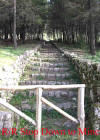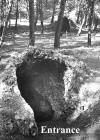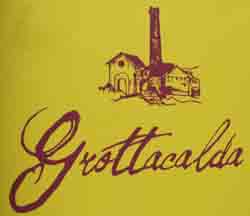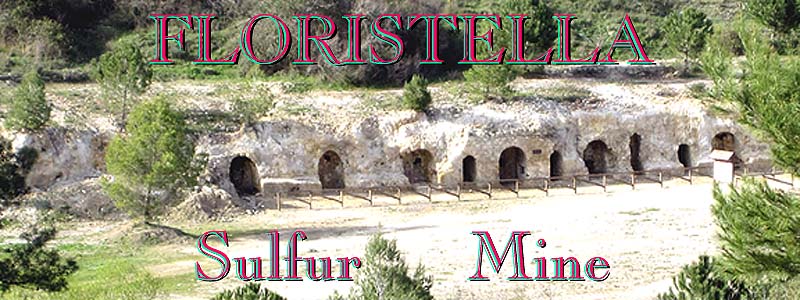SULFUR
In the 1800's sulfur
was the main resource in the central part of Sicily. At that time Sicily had
a monopoly on sulfur, 95% of world production, and almost all of it was
exported. The European, American and Japanese chemical industries depended
exclusively on Sicilian sulfur. Most of our Valguarnera ancestors were sulfur miners
(Zolfaio),
and most of those who were not, were farmers (Contadino).
In 1876 about 30% of
sulfur workers were children ages 7 to 15 years of age. These children were
called Carusi, which means "boys" in the Sicilian dialect.
The Carusi carried the sulfur from the tunnels, working 8-10 hours
per day. The Carusi were "rented" by the miners from the boys' parents to
work in the mine for a fixed period of time. The miners worked for the mine
owner, and the Carusi worked for the miner. The Carusi and the miners worked
naked or semi-naked because of the extremely hot temperatures in the mine.
My grandfather Gaetano Interlicchia started his mining career as a Carusi.
In November of 1886 a new law
prohibited the employment of children under age 10 in the mines, and under the
age of 9 outside the mines. In October of 1907 a law to protect women and
children in the workplace was passed. It prohibited the hire of children
under the age of 14.
One of the largest sulfur mines in Sicily was Floristella, which was located
just west of Valguarnera Caropepe. Prior
to the railroads that were built in the 1860s,
the Zolfaio and Carusi who lived
in Valguarnera walked to the mine on a cliff road off of
Via Carlo Rispoli and just south of Via Roma. The mine entrances were only a few
hundred yards northwest of the present day intersection of Via Roma and Via Spirito Santo. Two of the mine tunnels led back to Valguarnera and
under the west end of the town. They were actually mining under their homes,
an act that would later have consequences. (See the last photo below for a
map and details)
The railroad came to Valguarnera at about the time the nearby mine shafts
were no longer producing much. To reach the active mine shafts, the Zolfaio and
Carusi continued to walk down the same cliff road, but now they boarded a train for the
short ride to the active shafts. Once they reached the Floristella Mine
Station, they walked a short distance and then down a long stairway to their
work
area. The first thing they saw from the bottom of the stairs was the Pennisi
palace, the home of the Pennisi family, owners of the Floristella Mine.
In 1895 the price of
sulfur was driven down by two-thirds by the great depression in Europe. At
the beginning of the 20th century the discovery of rich deposits of sulfur
in Louisiana and Texas, combined with the discovery of sulfur substitutes,
resulted in the end of most of the mining jobs. This was about the time that our ancestors started boarding ships
in Palermo, and headed for America for a new life. Floristella Mine,
however, continued in business until 1984 when it became the last sulfur
mine in Sicily to close.
The Grottacalda literally means
"Hot Cave." It was the foundry that worked in concert with the Floristella
Mine. In addition to processing the sulfur, the Grottacalda produced metal
construction beams and other objects caste from metals from the mines.
In the mid 1950s those abandoned
and forgotten mine tunnels under Valguarnera collapsed, most likely due to
their support beams rotting away the previous 100 years or so. The collapse
destroyed the road down the cliff, the entire north end of Via Carlo Rispoli Street and part of Via Spirito
Santo Street. Homes in the area between these two streets were also
destroyed. The area is now a parking plaza.
(See the last photo below for a map and details)
Click the photo for a larger size.
Use your 'back' button to return to this page.


















